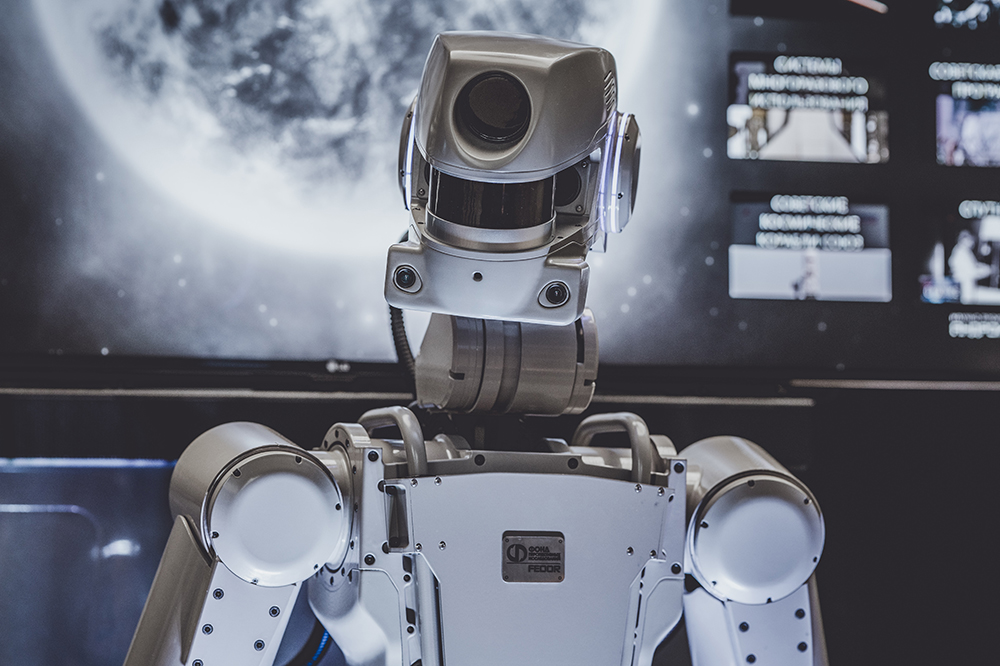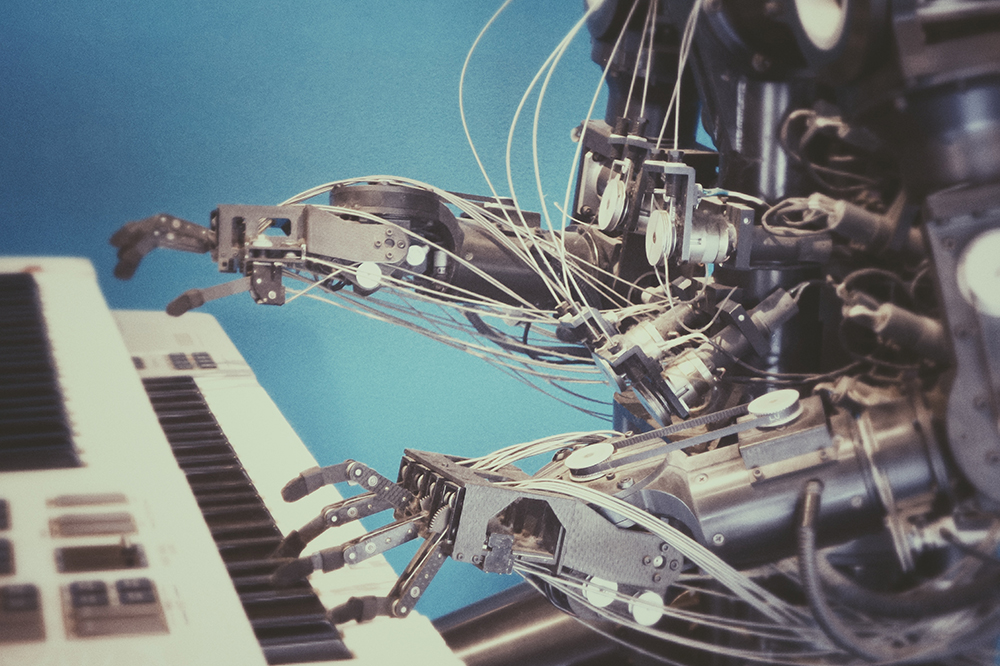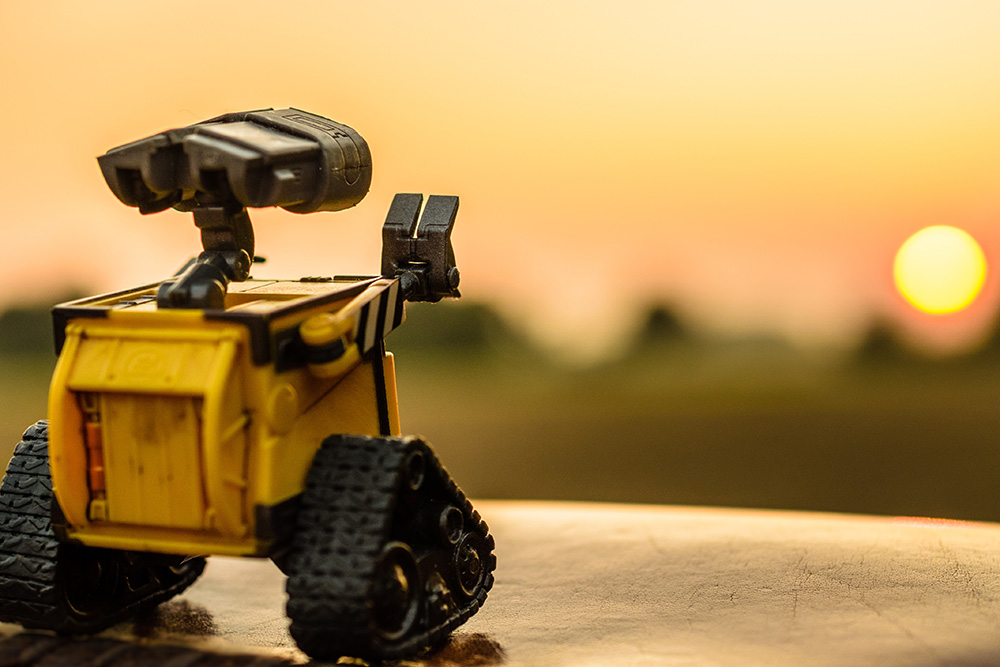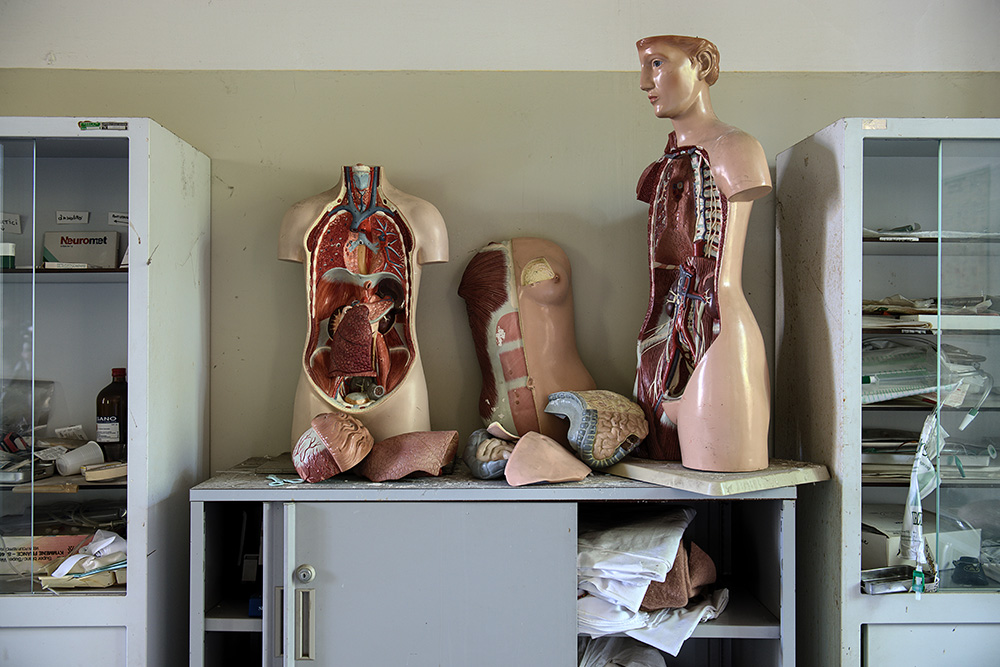Google is currently working on Meena, a particular chatbot, which should be able to have arbitrary conversations and be used in many contexts. In their paper “Towards a Human-like Open-Domain Chatbot“, the developers present the 2.6 billion parameters end-to-end trained neural conversational model. They show that Meena “can conduct conversations that are more sensible and specific than existing state-of-the-art chatbots”. “Such improvements are reflected through a new human evaluation metric that we propose for open-domain chatbots, called Sensibleness and Specificity Average (SSA), which captures basic, but important attributes for human conversation. Remarkably, we demonstrate that perplexity, an automatic metric that is readily available to any neural conversational models, highly correlates with SSA.” (Google AI Blog) The company draws a comparison with OpenAI GPT-2, a model used in “Talk to Transformer” and Harmony, among others, which uses 1.5 billion parameters and is based on the text content of 8 million web pages.
Towards Self-replicating Machines
In recent decades, there have been several attempts to supplement traditional electronic storage media. 3D codes with color as the third dimension are an interesting approach. They can be applied to paper or film, for example. Another approach has now been presented by researchers from Switzerland and Israel. They are able to generate artificial DNA and place it in any object. From the Abstract: “We devised a ‘DNA-of-things’ (DoT) storage architecture to produce materials with immutable memory. In a DoT framework, DNA molecules record the data, and these molecules are then encapsulated in nanometer silica beads, which are fused into various materials that are used to print or cast objects in any shape. First, we applied DoT to three-dimensionally print a Stanford Bunny that contained a 45 kB digital DNA blueprint for its synthesis. We synthesized five generations of the bunny, each from the memory of the previous generation without additional DNA synthesis or degradation of information. … DoT could be applied to store electronic health records in medical implants, to hide data in everyday objects (steganography) and to manufacture objects containing their own blueprint. It may also facilitate the development of self-replicating machines.” (Abstract) The approach could also be interesting for robots. They could, for example, reproduce themselves on Mars. The article with the title “A DNA-of-things storage architecture to create materials with embedded memory” has been published in NATURE BIOTECHNOLOGY and can be accessed via www.nature.com/articles/s41587-019-0356-z.epdf.
Robots that Learn as They Go
“Alphabet X, the company’s early research and development division, has unveiled the Everyday Robot project, whose aim is to develop a ‘general-purpose learning robot.’ The idea is to equip robots with cameras and complex machine-learning software, letting them observe the world around them and learn from it without needing to be taught every potential situation they may encounter.” (MIT Technology Review, 23 November 2019) This was reported by MIT Technology Review on 23 November 2019 in the article “Alphabet X’s ‘Everyday Robot’ project is making machines that learn as they go”. The approach of Alphabet X seems to be well though-out and target-oriented. In a way, it is oriented towards human learning. One could also teach robots human language in this way. With the help of microphones, cameras and machine learning, they would gradually understand us better and better. For example, they observe how we point to and comment on a person. Or they perceive that we point to an object and say a certain term – and after some time they conclude that this is the name of the object. However, such frameworks pose ethical and legal challenges. You can’t just designate cities as such test areas. The result would be comprehensive surveillance in public spaces. Specially established test areas, on the other hand, would probably not have the same benefits as “natural environments”. Many questions still need to be answered.
Robophilosophy 2020
“Once we place so-called ‘social robots’ into the social practices of our everyday lives and lifeworlds, we create complex, and possibly irreversible, interventions in the physical and semantic spaces of human culture and sociality. The long-term socio-cultural consequences of these interventions is currently impossible to gauge.” (Website Robophilosophy Conference) With these words the next Robophilosophy conference is announced. It will take place from 18 to 21 August 2019 in Aarhus, Denmark. The CfP raises questions like that: “How can we create cultural dynamics with or through social robots that will not impact our value landscape negatively? How can we develop social robotics applications that are culturally sustainable? If cultural sustainability is relative to a community, what can we expect in a global robot market? Could we design human-robot interactions in ways that will positively cultivate the values we, or people anywhere, care about?” (Website Robophilosophy Conference) In 2018 Hiroshi Ishiguro, Guy Standing, Catelijne Muller, Joanna Bryson, and Oliver Bendel had been keynote speakers. In 2020, Catrin Misselhorn, Selma Sabanovic, and Shannon Vallor will be presenting. More information via conferences.au.dk/robo-philosophy/.
The Interceptor in the Cengkareng Drain
Plastic in rivers and seas is one of the biggest problems of our time. Whether bottles or bags, whether macro or micro plastic – the flora and fauna is impaired and destroyed. Six projects against plastic waste have already been presented here. The focus was on the seas. One of the initiatives is now also active in the rivers. This is very important because what is fished out in the rivers no longer ends up in the oceans. The magazine Fast Company reported on 26 October 2019: “In the Cengkareng Drain, a river that runs through the megacity of Jakarta, Indonesia, tons of plastic trash flows to the ocean each year. But now a new solar-powered robot called the Interceptor is gobbling up the waste so that it can be recycled instead. The system was designed by the nonprofit The Ocean Cleanup, which spent the past four years secretly developing and testing the technology while it continued to work on its main project – a device that can capture plastic trash once it’s already in the ocean.” (Fast Company, 26 October 2019) This is good news. However, the most important thing is to avoid plastic waste. Otherwise, the destruction of the waters will continue unstoppably.
How to Improve Robot Hugs
Hugs are very important to many of us. We are embraced by familiar and strange people. When we hug ourselves, it does not have the same effect. And when a robot hugs us, it has no effect at all – or we don’t feel comfortable. But you can change that a bit. Alexis E. Block and Katherine J. Kuchenbecker from the Max Planck Institute for Intelligent Systems have published a paper on a research project in this field. The purpose of the project was to evaluate human responses to different robot physical characteristics and hugging behaviors. “Analysis of the results showed that people significantly prefer soft, warm hugs over hard, cold hugs. Furthermore, users prefer hugs that physically squeeze them and release immediately when they are ready for the hug to end. Taking part in the experiment also significantly increased positive user opinions of robots and robot use.” (Abstract) The paper “Softness, Warmth, and Responsiveness Improve Robot Hugs” was published in the International Journal of Social Robotics in January 2019 (First Online: 25 October 2018). It is available via link.springer.com/article/10.1007/s12369-018-0495-2.
A Handbook on Machine Ethics
After three years, an ambitious project has come to its preliminary end: The “Handbuch Maschinenethik” (“Handbook Machine Ethics”) (edited by Oliver Bendel) was published by Springer in mid-October 2019. It brings together contributions from leading experts in the fields of machine ethics, robot ethics, technology ethics, technology philosophy and robot law. At the moment it can be downloaded here: link.springer.com/book/10.1007/978-3-658-17483-5 … It has become an extensive, a remarkable, a unique book. In a way, it is a counterpart to American research, which dominates the discipline: Most authors come from Europe and Asia. The editor, who has been involved with information ethics, robotics and machine ethics for 20 years and has been researching machine ethics intensively for eight years, is full of hope that the book will find its place in the standard literature on machine ethics, such as “Moral Machines” (2009) by Wendell Wallach and Colin Allen and “Machine Ethics” (2011) by Michael and Susan Leigh Anderson, and “Programming Machine Ethics” (2016) by Luís Moniz Pereira (with Ari Saptawijaya) and “Grundfragen der Maschinenethik” (2018) by Catrin Misselhorn – both have contributed significantly to the “Handbuch Maschinenethik”. Over the next few days, the book with its 23 chapters and 469 pages will be made available for sale on the Springer website and also in print.
Punch the Robot
Robots are repeatedly damaged or destroyed. The hitchBOT is a well-known example. But also the security robot K5 has become a victim of attacks several times. The latest case is described in the magazine Wired: “Every day for 10 months, Knightscope K5 patrolled the parking garage across the street from the city hall in Hayward, California. An autonomous security robot, it rolled around by itself, taking video and reading license plates. Locals had complained the garage was dangerous, but K5 seemed to be doing a good job restoring safety. Until the night of August 3, when a stranger came up to K5, knocked it down, and kicked it repeatedly, inflicting serious damage.” (Wired, 29 August 2019) The author investigates the question of whether one may attack robots. Of course you shouldn’t damage other people’s property. But what if the robot is a spy, a data collector, a profile creator? Digital self-defence (which exploits digital as well as analog possibilities) seems to be a proven tool not only in Hong Kong, but also in the US and Europe. The rights of robots that some demand cannot be a serious problem. Robots do not have rights. They feel nothing, they do not suffer, they have no consciousness. “So punch the robot, I tell you! Test the strength of your sociopolitical convictions on this lunk of inorganic matter!” (Wired, 29 August 2019)
The Reversed Cyborg
Chimeras in the biological and medical sense are organisms that consist of cells or tissues of different individuals and yet form closed and viable (not necessarily reproductive) organisms. They can be located within a species or between species and can be both plants and animals. There are natural (blood chimeras in mammals) and artificial mixed organisms (grafting in plants, animal-human embryos). Cyborgs are not chimeras in this sense. Nevertheless, research in this field might also be relevant for them, in particular for inverted or reversed cyborgs, for example robots in which an animal or human brain or organ is implanted. Animal-human chimeras for the production of human organs are regarded as unproblematic by many ethicists. According to a comment by Oliver Bendel, this is astonishing, since findings from animal ethics and veterinary medicine and in particular suffering and death of non-human living beings are ignored.
An Exosuit for Walking and Running
“Walking and running require different gaits, with each type of motion putting a greater bias on different muscles and joints.” (Science 2019) Exoskeletons can support people in many ways. However, it is not easy for them to adjust to different types of motion. Jinsoo Kim and his co-authors discuss a possible solution in their article “Reducing the metabolic rate of walking and running with a versatile, portable exosuit”, published in the current issue of Science (16 August 2019). “They developed a soft, fully portable, lightweight exosuit that is able to reduce the metabolic rate for both running and walking by assisting each motion via the hip extension … A waist belt holds most of the mass, thus reducing the cost of carrying the suit. By tracking the motion of the user, the suit is able to switch modes between the two types of motion automatically.“ (Science 2019) There are many possible applications for the exosuit, both civil and military. The article can be downloaded here.









